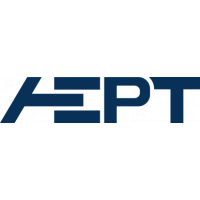This study investigates the flow field induced by a surface dielectric barrier discharge (SDBD) system, known for its efficient pollution remediation of volatile organic compounds (VOCs). We aim to understand the flow dynamics that contribute to the high conversion observed in similar systems using this specific SDBD design. Examining how the surface discharge affects the gas mixing in chemical processes is important for both understanding the fundamentals and for potential industrial applications. Experimental techniques, including schlieren imaging and particle image velocimetry (PIV), applied with high temporal resolution, were used to analyse the flow field. Complementary, fluid simulations are employed to investigate the coupling between streamer and gas dynamics. Results show distinct fluid field behaviours for different electrode configurations, which differ in geometric complexity. The fluid field analysis of the most basic electrode design revealed behaviours commonly observed in actuator studies. The simulation results indicate the local information about the electron density as well as different temporal phases of the fluid flow velocity field containing the development of the experimental found vortex structure, its direction and speed of rotation. The electrode design with mostly parallel grid line structures exhibits confined vortices near the surface. In contrast, an electrode design also used in previous studies, is shown to promote strong gas transport through extended vortex structures, enhancing gas mixing and potentially explaining the high conversion observed.
| Field | Value |
|---|---|
| Publisher | |
| Authors | |
| Release Date | 2023-11-13 |
| Identifier | 7a8ea360-c494-4cb6-8ec2-917da7fbc7a5 |
| Permanent Identifier (URI) | |
| Is supplementing | |
| Plasma Source Name | |
| Plasma Source Application | |
| Plasma Source Specification | |
| Plasma Source Properties | 11 kV peak to peak voltage, max 100 watts per electrode |
| Language | English (United Kingdom) |
| Plasma Source Procedure | Turn the plasma source and camera on at the same point in time to record the starting phase. Between the measurements the experimentalists waited for 5 minutes to ensure that no heating effects from previous measurement play a role. |
| License | |
| Plasma Medium Name | |
| Plasma Medium Properties | Quiescent air |
| Plasma Target Name | |
| Contact Name | Böddecker, Alexander |
| Plasma Target Properties | gaseous |
| Plasma Target Procedure | The air surrounding the SDBD has to be seeded with aerosols for preparing the PIV measurements. 5 min of waiting time are necessary, to ensure that the air is not moving in a way that the measurements could be influenced. |
| Contact Email | |
| Plasma Diagnostic Properties | All details can be found in the paper, that is published with Open Access. |
| Public Access Level | Public |
| Plasma Diagnostic Name | |
| Funding Agency | |
| Project | |
| Subproject |
Data and Resources
- Data for Fig 9.txt
Schlieren_i files can be used to plot the top row graphs
Download
contourf data... - Data for Fig 7.txt
Schlieren_i files can be usded to plo the top row graphs
Download
contourf data... - Data for Fig 8.txt
Schlieren_i files can be usded to plo the top row graphs
Download
contourf data...


![[Open Data]](https://assets.okfn.org/images/ok_buttons/od_80x15_blue.png)